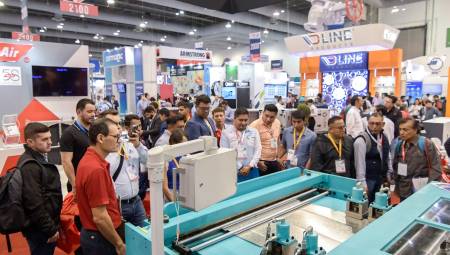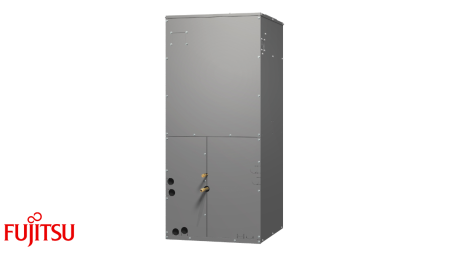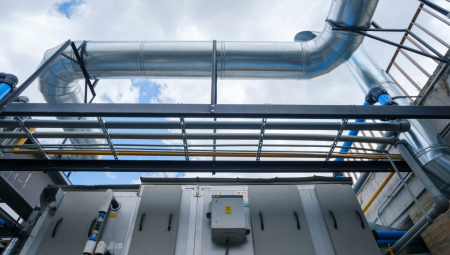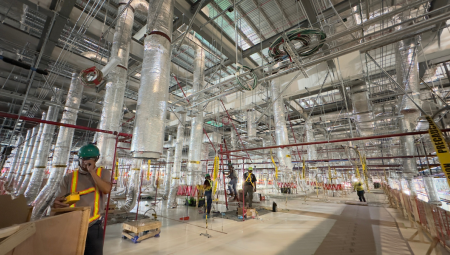 In spaces where considerable numbers of people congregate, units of a single zone of variable volume are a recommended option, they are also related to norms such as those of Ashrae.
In spaces where considerable numbers of people congregate, units of a single zone of variable volume are a recommended option, they are also related to norms such as those of Ashrae.
by Alfredo Sotolongo*
The most economical energy to produce is the one that is saved!
In the Opinion column of the previous issue, I would indicate that in this next issue you would explain how the benefits of single-zone units of variable volume relate to ASHRAE standards regarding comfort and energy savings.
The use of single-zone units of variable volume is recommended in applications where the thermal load varies considerably during the day, in places such as classrooms, conference rooms, theater rooms, libraries, churches, shops, etc.
As I explained in the previous column, within the benefits of these units is the control of both temperature and humidity, by varying the amount of air and the capacity of the compressors directly proportional to the thermal load. This represents better comfort and that the energy consumption is exactly what is required to meet the conditions of the conditioned area.
The application of single zone units of variable volume is required in several of the most prominent energy standards institutions such as ANSI, ASHRAE and IES standards 90.1-2010 and 189.1-2009. Below are details of paragraphs where the use of these units is required:
Standard 90.1-2010
The purpose of this standard is to indicate the minimum requirements for the energy-efficient design of buildings, except for low-rise residential buildings. ANSI/ASHRAE/IES Standard 90,1-2010. Section 6.4.3.10 Controls for Single Zone Units of Variable Volume. Air conditioning units must have air flow control as follows:
a) Air handling units and fan coil units with cold water coils and supply fans with motors equal to or greater than 5 HP must use two-speed motors or frequency inverters to modulate the air flow. Where there is a cooling demand of 50% or less, the fan control should be able to reduce the air flow to no more than the greater of the following:
1) 50% of the total supply air.
2) The volume of outside air needed to maintain the ventilation requirement of ASHRAE 62.1.
b) From the first of January 2012, all air conditioning equipment and air handling units with direct expansion cooling system with cooling capacity according to AHRI equal to or greater than 110,000 Btu/hr serving a single zone, must have fans with two-speed motors or modulated by frequency inverters. At cooling demands less than or equal to 50%, the supply fan control must be able to reduce the air flow to no more than the largest of the following:
1) Two-thirds of the maximum speed.
2) The volume of outside air required to maintain the ventilation requirement of ASHRAE 62.1
Standard 189.1-2009
The purpose of this standard is to indicate the minimum requirements for design, construction and operation at high efficiency in green buildings for:
a) Balance ecological responsibility, resource efficiency, occupant comfort and demonstrate responsiveness to the community.
b) Implement the goals of saving energy, taking care of the environment and meeting the needs of the present without compromising the ability of future generations to meet their goals.
Section 7.4.3.7
The following requirements must apply:
a) Direct expansion systems with capacities of more than 65,000 Btu/hr must have a minimum of two cooling stages.
b) Similar to subparagraph "a" of rule 90.1-2010.
c) Similar to subparagraph "b" of standard 90.1-2010
d) All units of variable volume must be equipped with variable speed fans that result in an energy consumption of 30% or less when the flow rate is reduced to 50%.
With the application of variable frequency drives in units of a single zone of variable volume, significant energy savings are achieved. By modulating the revolutions of the fan motors, consumption is exponentially reduced to the hub. In other words, when the flow rate drops to 50%, the engine consumption could drop to 12.5% of the total.
In writing these standards, these institutions have researched the various applications and verified the energy savings they represent. In several countries these regulations have become laws, due to the need to save on electricity.
Regardless of the legal obligation, it is important to use these standards as a guide in the selection of air conditioning units, in order to minimize energy consumption and contribute to improving the environment.
If you need more information on any of the topics covered in this column, please contact me at the email [email protected]
* President of Protec, Inc., is certified as a professional engineer in Puerto Rico and the state of Florida; has more than 40 years of experience in the application and sale of systems and equipment for energy conservation. He is a member of ASME (American Society of Mechanical Engineers), AEE (Association of Energy Engineers), ASHRAE and was president of the Miami chapter of that association.













